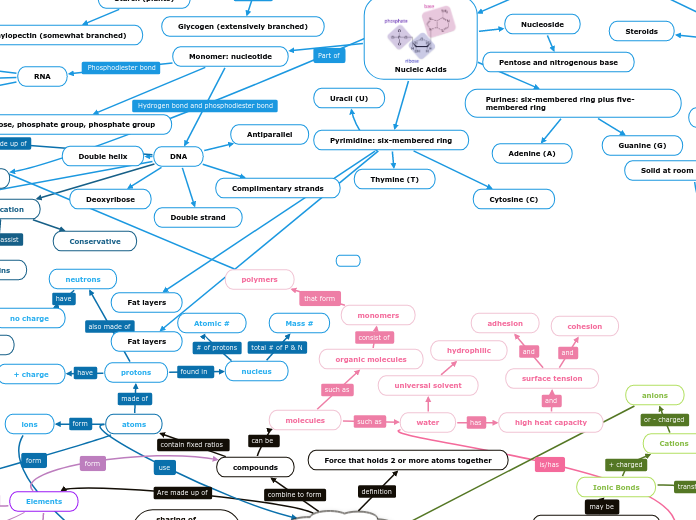Pharmacodynamics Module 1
Major drug targets
Transporters
Enzymes
Ion Channels
Classical receptors **
Major Classes of Classical Receptors
Nuclear receptors
slower response (hours to days)
Nuclear receptor effectors = post-transcriptional products of gene activation
direct interaction with DNA --> gene transcription --> protein synthesis --> cellular effects
Class II
mainly lipid ligands
low affinity
heterodimers (except RCR)
in nucleus
Hybrid Class
RXR heterodimers
mainly endocrine
Class I
high affinity
receptors for steroid hormones and targets for endocrine mediators
form homodimers
in cytoplasm
N-terminal region controls interaction of receptor w/ co-activator or co-repressor proteins that control transcription
C-terminal domain w/ region that governs nuclear localization of receptor
separate receptor and DNA binding domains
translocates to nucleus
intracellular
no transmembrane domain
Kinase-linked receptors
Downstream effects
kinase cascades
intermediate response (minutes to hours)
ligand binds --> dimerization of receptor --> autophorylation of tyrosine residues on cytoplasmic portion --> activate intracellular signaling proteins (phospholipases/protein kinases)
signaling protein activated by receptor tyrosine kinase = activation or inhibition of nuclear transcription factors by phosphorylation and suppression or activation of genes
role in inflammation, tissue repair, cell cycle progression, apoptosis, and immune response
ligands include GF, cytokines, hormones, bacterial LPS
intrinsic protein kinase activity or linked to free protein kinases
Cytokine Receptors
Serine/Threonine Kinase
Receptor Tyrosine Kinases
form dimer pairs when activated
single transmembrane domain (helix) links extracellular domain to intracellular kinase domain
G-protein coupled receptors (metabotropic receptors)
Downstream Effects
one agonist bound GPCR can activate several G-protein complexes = amplification
Subfamilies
Metabotropic glutamate receptors/Ca sensor
GABA receptors
Secretin/Glucagon family
EC tail with ligand binding domain
receptors for peptide hormones
Rhodopsin family
ligands bind to helices or extracellular hoops
short extracellular tail (N-terminal)
amine neurotransmitters, neuropeptides, purines, protanoids, cannnabinoids
desensitization through down regulation of receptor through phosphorylation of cytoplasmic tail (interferes with binding) and marks for endocytic internalization destruction
Protein kinase A and C phosphorylate
Alpha subunit (in)activates itself
GTP hydrolyzed to GDP inactivates receptor
GDP converted to GTP activates receptor
act as messengers for receptors coupled to them
Subtopic
mediates olfaction
alpha, beta, gamma subunits anchored to membrane
20 alpha subunit isoforms that are very selective
some inhibit and some activate effector protein
membrane localized but diffuse freely around membrane associating with different receptors
cytoplasmic domain at C-terminal
extracellular domain at N-terminal
seven transmembrane domains alpha-helices
Ligand-gated ion channels (ionotropic receptors)
Mechanisms
desensitization occurs when channel closes and ligand remains bound
duration of channel opening varies between agonist or drug
rapid response
conductance (speed of ion transfer/ion flow rate through pore) doesn't vary between endogenous or agonist drugs
direct; no-mediator activation
controls synaptic events
neurotransmitters: Ach or glutamate
Structure
membrane localized
ion channel complex
ligand binding domain coupled to pentameric complex of different subunits
four transmembrane domains









